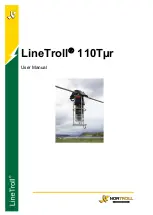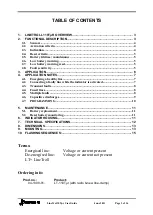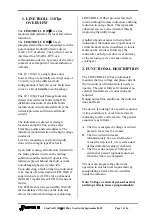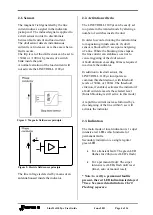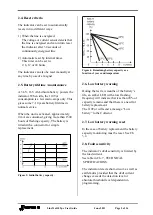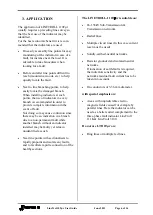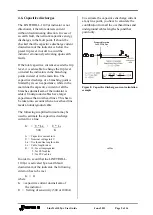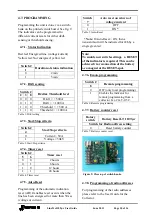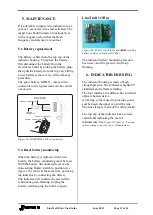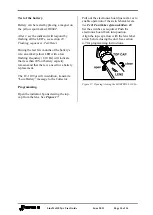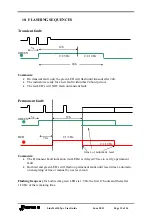
LineTro110Tµr User Guide
June 2011 Page 6 of 16
3.
APPLICATION
The application of LINETROLL 110Tµr
usually requires a preceding line survey so
that the best use of the indicator may be
identified.
For the best economic benefit it is recom-
mended that the indicators are used:
On easily accessibly line points for easy
monitoring of the indicator in case of a
fault, for instance near the road. It is
advisable to take binoculars when
looking for a fault.
Before and after line points difficult to
reach (mountains, woods, etc.) to help
quickly locate the fault.
Next to line branching points, to help
easily locate the damaged branch.
When installing indicators at such
points, the use of indicators in every
branch is recommended in order to
provide complete information in the
event of fault.
Not doing so may cause confusion since
there may be an indication in a branch
due to a non-permanent fault while
another branch without an indicator
installed may be faulty yet remain
unidentified as such.
Near line points with sectionalisers to
rapidly pinpoint and isolate any faults,
and to facilitate rapid reconnection of the
healthy sections.
The LINETROLL-110T
/r is suitable on:
66-138kV Sub-Transmission &
Transmission networks.
Radial lines.
Multiple circuit lines (In this case current
reset must be used)
Solidly-earthed-neutral networks.
Resistor grounded and isolated neutral
networks.
If indication of earth-faults is required,
the indicators sensitivity and the
networks residual fault current has to be
taken into account.
On conductors of 5-36 mm diameter.
with special emphasis on:
Areas with unpredictable electro-
magnetic fields caused for example by
parallel lines. Here the indicator can be
used as a better suited complement to the
three-phase fault indicator LineTroll
111K & LineTroll 3100.
Do
not
use LT110Tµr on:
Ring lines or multiple fed lines.

